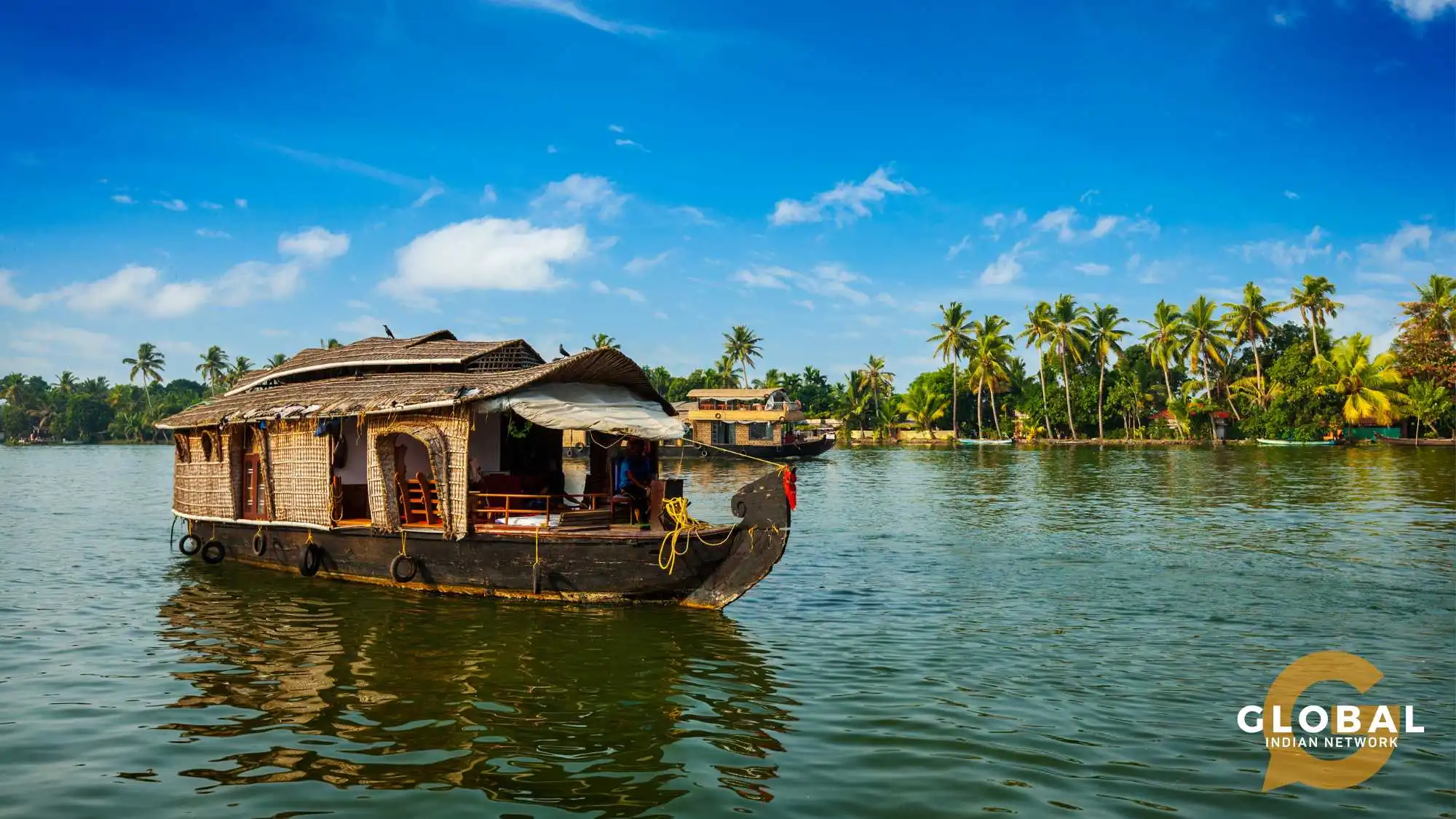In 2024, sustainable tourism in India has emerged as a pivotal force in shaping the future of travel and conservation efforts. As the world grapples with environmental challenges, India's tourism industry is undergoing a paradigm shift towards more responsible and eco-conscious practices. From promoting community-based tourism initiatives to implementing renewable energy solutions and biodiversity conservation programs, the nation is at the forefront of sustainable tourism innovation. In this article, we delve into the evolving landscape of sustainable tourism in India, exploring initiatives, challenges, and the profound impact it has on both travellers and the environment.
Table of Contents
Sustainable Tourism in India - Overview
Sustainable tourism refers to a responsible approach to travel that aims to minimise negative impacts on the environment, culture, and local communities while maximising positive
Cultural Heritage: India's diverse cultures, languages, traditions, and historical sites are protected and celebrated through sustainable tourism, ensuring their preservation and respect by travellers.
Natural Beauty: India's stunning landscapes, spanning from the Himalayas to Kerala's backwaters, are protected through sustainable practices, ensuring forests, wildlife, and pristine beaches.
Local Communities: Sustainable tourism enhances local economies by creating jobs, supporting small businesses, and empowering communities while also encouraging travellers to engage with locals, learn from their traditions, and contribute positively.
Biodiversity: India's biodiversity is a significant attraction, and responsible tourism promotes appreciation for wildlife without disrupting ecosystems.
Climate Impact: Sustainable travel practices help reduce the carbon footprint of travellers by choosing eco-friendly options, which can help mitigate the effects of climate change.
In summary, sustainable tourism in India is essential for preserving its rich heritage, natural beauty, and ensuring a positive legacy for generations to come.
Challenges Faced by Indian Tourism
Indian tourism has experienced significant growth in recent years, driven by the growing middle class, high-spending foreign tourists, and government campaigns promoting "Incredible India," but presents challenges that require urgent attention.
Rapid Growth of Tourism in India
India's tourism industry is a significant contributor to foreign exchange earnings, job creation, and economic development, with eco-tourism emerging as a major global destination.
Environmental and Social Issues Arising from Tourism Growth
Inadequate Infrastructure: Insufficient transportation infrastructure limits sustainable tourism in remote areas, while inadequate sanitation facilities affect tourists and local communities. Improper disposal of campsite sewage into rivers contaminates water sources, affecting wildlife, livestock, and those relying on these rivers for drinking water.
Deforestation: The growth of tourism frequently results in deforestation, disrupting ecological life systems and contributing to environmental degradation.
Pollution: Pollution, including vehicle-induced air and noise pollution, poses a significant threat to the natural environment.
Threat to Indigenous Culture: Local communities are grappling with the challenge of cultural survival and freedom of expression as tourism continues to encroach upon their traditional lifestyles.
Overcrowding: Overcrowding in popular tourist destinations is causing a negative impact on the overall experience and straining local resources.
Carbon Emissions: The rise in travel and transportation is significantly contributing to the increase in carbon emissions, which in turn is exacerbating climate change.
Exploitation of Local Communities: Unregulated tourism can lead to the exploitation of local labour, resources, and culture, resulting in social inequities.
Examples of Green Initiatives in India
Some examples of green initiatives in India include:
Green Credit Programme (GCP): This is a system based on markets that encourages people, communities, businesses, and private sector industries to take voluntary environmental actions in a variety of fields. An inter-ministerial steering committee supports its governance framework, and the Indian Council of Forestry Research and Education (ICFRE) will oversee its overall implementation. GCP's first phase will be devoted to afforestation and water conservation. ICFRE is creating a Green Credit Registry and trading platform to make it easier to register, purchase and sell green credits.
Ecomark Scheme: This is a program to promote "eco-friendly" products by granting certification and labelling to consumer and household goods that satisfy environmental standards while upholding Indian norms for quality. Goods certified by the Ecomark Scheme will follow strict environmental standards, guaranteeing low environmental impact.
Greening Initiatives in the Coal Sector: Through persistent reclamation and afforestation of the areas inside and surrounding its operating mines, coal/lignite PSUs have been making real and consistent efforts to reduce the environmental impact of coal mining. In many mines, reclamation work is being done in accordance with well-crafted and authorised mine closure plans, which include comprehensive guidelines for both Progressive and Final Mine Closure activities. By planting more than 421.9 lakh saplings, coal/lignite PSUs have covered approximately 18,795 hectares of land with greenery over the course of the last nine years, from FY 2014–15 to FY 2023–24 (through October 2023).
Green Initiatives by Godrej Interio: India's biggest manufacturer of residential and commercial furniture, Godrej Interio is dedicated to sustainability.
Green Initiatives by Tamil Nadu Government: Together with the United Nations Environment Programme (UNEP), the Tamil Nadu government has started a number of green projects to help the state provide equitable, clean, and effective cooling as well as prepare for the increasing extreme heat. The projects include environmental education, plastic waste management, and sustainable cooling.
Specific Sustainable Tourism Practices
India is actively promoting sustainable tourism practices to ensure responsible and eco-friendly travel. Here are some key initiatives and practices:
Promoting Environmental Sustainability: Promoting eco-friendly accommodations that prioritise water conservation, waste management, and renewable energy use, and raising environmental awareness among tourists and local communities.
Protecting Biodiversity: Promoting responsible wildlife tourism, such as ethical wildlife safaris and birdwatching, is crucial for preserving wildlife sanctuaries, national parks, and fragile ecosystems.
Promoting Economic Sustainability: The initiative aims to empower local communities by involving them in tourism-related activities, encouraging tourists to purchase local products and supporting local artisans.
Promoting Socio-Cultural Sustainability: Engaging in community-based tourism experiences allows individuals to learn about local customs, traditions, and cultural practices, fostering a deeper understanding of local lifestyles.
Certification of Sustainable Tourism: The initiative involves implementing certification schemes to promote sustainable practices in tourism businesses, such as hotels, restaurants, and tour operators.
IEC (Information, Education, and Communication) and Capacity Building: The initiative involves developing awareness campaigns to educate tourists about sustainable practices and enhancing stakeholder understanding of sustainable tourism.
Governance and Collaboration: The initiative involves coordinating efforts from various sectors, including ministries, state governments, local institutions, NGOs, and industry players, to achieve India's goal of becoming a sustainable tourism destination.
As travellers, we can contribute to sustainable tourism by making conscious choices and respecting the environment and local communities.
Role of Technology in Indian Sustainable Tourism
Technology plays a crucial role in advancing sustainable tourism in India. Let's delve into how it contributes to a more responsible and eco-friendly travel experience:
Eco-Friendly Accommodations: Technology has led to the rise of eco-friendly hotels, hostels, and vacation rentals, which use sustainable technologies like solar panels and energy-efficient appliances. These establishments contribute to sustainable tourism by minimising their carbon footprint. Some even offer guests the option to offset their carbon emissions or provide reusable items.
Transportation Innovations: Electric cars, buses, and other sustainable transportation alternatives are gaining popularity, reducing greenhouse gas emissions and improving air quality. Services like bike rentals, electric scooters, and shared transportation platforms also promote healthier transportation options.
Information Management and Community Education: Information and communication technologies aid destination management organisations in sustainable tourism development by providing applications for information management, enhancing tourist satisfaction, and promoting community participation. They also manage energy usage, promoting a more sustainable approach.
Destination Stewardship: Technology will significantly influence destination management in the future, enabling controlled visitor flow and educating communities on handling traffic disruptions, thereby enhancing environmental impact.
India's Commitment to Sustainable Development Goals (SDGs): India's sustainable tourism initiatives, such as Swadesh Darshan, aim to showcase India's cultural heritage and natural beauty through theme-based tourist circuits. Technology can significantly promote and operationalise sustainable tourism, achieving SDGs, reducing carbon footprint, and improving destination management, ultimately contributing to a more sustainable tourism landscape.
Technology for Preserving Cultural Heritage in Tourism
Technology plays a pivotal role in preserving cultural heritage within the context of tourism. Let's explore some ways it achieves this:
Digital Documentation and Archiving: Digitization creates virtual archives for historical artefacts, manuscripts, artworks, and photographs, ensuring cultural heritage remains accessible even when physical items deteriorate. 3D scanning and photogrammetry capture detailed images of artefacts, allowing global study, analysis, and sharing.
Virtual Reality (VR) and Augmented Reality (AR): VR and AR technologies offer immersive experiences, allowing users to virtually explore historical sites, museums, and ancient structures, allowing tourists to step back in time, walk through temples, and witness historical events.
Mobile Apps and Audio Guides: Mobile apps provide interactive audio guides for tourists to learn about cultural sites, enhancing their experience with multilingual content, interactive maps, and augmented reality overlays, enhancing the understanding of each artefact or monument.
Geospatial Technologies: GIS aids in mapping and managing cultural heritage sites, aiding conservation efforts, risk assessment, monitoring, and identifying vulnerable areas for disaster management.
Crowdsourcing and Citizen Science: Technology facilitates crowdsourcing, allowing tourists and locals to contribute to documenting cultural heritage through the uploading of photos, stories, and historical information.
Online Education and Awareness: Webinars, online courses, and virtual workshops educate people about cultural heritage preservation, while social media platforms promote responsible tourism practices.
Preservation of Languages and Traditions: Technology aids in recording and preserving endangered languages, oral traditions, and folk music, while digital platforms enable communities to share their cultural practices globally.
Smart Conservation Techniques: IoT sensors are used in museums and heritage sites to monitor environmental conditions, preventing damage to artefacts and ensuring optimal conservation.
Blockchain for Provenance and Authentication: Blockchain technology can verify the authenticity and provenance of cultural artefacts, thereby preventing the circulation of fake or looted items in the market.
Collaboration and Networking: Technology enables global collaboration among researchers, historians, and conservationists through platforms like Google Arts & Culture, connecting people to cultural heritage from diverse locations.
In summary, technology not only preserves cultural heritage but also enhances its accessibility, education, and appreciation for future generations.
Future Prospects of Sustainable Tourism in India
India, with its diverse landscapes, historical monuments, and vibrant culture, has immense potential for sustainable tourism. Here are some key aspects to consider:
Ecotourism and Biodiversity Conservation: India's diverse biodiversity, including the Himalayan foothills, Western Ghats, and the Andaman Islands, presents unique ecotourism opportunities. Protecting national parks, wildlife sanctuaries, and fragile ecosystems is crucial, with responsible wildlife viewing and conservation initiatives being essential.
Community-Based Tourism: Engaging local communities in tourism activities, such as homestays, community-led tours, and handicraft workshops, can promote economic empowerment and cultural preservation.
Heritage and Cultural Tourism: India's iconic historical monuments, temples, and palaces require collective preservation through sustainable practices like limiting footfall, promoting restoration efforts, and promoting traditional arts and crafts.
Promotion of Responsible Travel: Travelers should opt for eco-friendly accommodations, reduce plastic usage, and respect local customs. Public transport, walking tours, and cycling can also help minimise environmental impact.
Community-Based Tourism in India
Community-based tourism (CBT) in India is a powerful approach that fosters sustainable travel experiences while empowering local communities. Here's what you need to know:
Definition and Essence of CBT: Community-based tourism involves tourists living in local homes and farms and participating in activities like cooking, crafting, storytelling, and village tours, allowing them to experience local culture and gain insights into rituals, beliefs, and daily life.
Interaction with Local Communities: CBT involves fostering interaction between travellers and locals, fostering cultural connections through dances, folklore, songs, costumes, and cuisine. This type of travel offers valuable insights into local lives and makes a significant impact on the local community.
Ownership and Economic Benefits: CBT's appeal lies in local ownership and management of tourism experiences, where travellers engage with local experts, directly supporting the community and generating economic benefits that enhance livelihoods.
Examples of Community-Based Tourism in India
Spiti Valley, Himachal Pradesh: Eco-tourism initiatives supporting conservation and local communities.
Chilika Lake, Odisha: Bird watching and eco-tourism, promoting lake ecology conservation.
Kabini Wildlife Sanctuary, Karnataka: Eco-friendly resorts benefiting local communities.
Sikkim: Ban on plastic bags, eco-friendly product promotion.
Andaman and Nicobar Islands: Conservation efforts and responsible tourism practices.
Vision for Sustainable Tourism: India's Responsible Tourism Policy promotes community-led initiatives, such as Swadesh Darshan and Dekho Apna Desh, promoting responsible travel to lesser-known destinations beyond tourist hotspots.
Community-based tourism is a sustainable approach that benefits indigenous communities by preserving cultural values and enhancing the experience for both travellers and locals.
Sustainable Practices for Tourists in India
When visiting India, adopting sustainable practices is crucial to minimise your impact on the environment, support local communities, and preserve the country's rich heritage. Here are some sustainable tourism practices specifically for travellers in India:
Learn about local customs and traditions, including etiquette, dress codes, and religious practices, and support local artisans by purchasing handmade souvenirs and crafts. Reduce your carbon footprint by opting for eco-friendly transportation like trains or buses, and offset emissions through renewable energy or reforestation programs.
India is grappling with water scarcity in numerous regions, urging judicious water usage and avoiding waste in hotels or during sightseeing. Reduce plastic usage by using reusable water bottles and opting for cloth bags for shopping instead of single-use plastic bags.
Support local businesses by exploring local cuisine and supporting small eateries, which not only benefits local businesses but also reduces food transportation emissions. Shop locally by purchasing from artisans and farmers.
Choose local accommodations like guesthouses or homestays for authentic experiences and community involvement. Utilise eco-friendly transportation like cycling or walking and public transport whenever possible.
Support local businesses and communities by educating them about the area's needs and participating in community-based tourism initiatives. Respect local culture and heritage by visiting historical sites responsibly, avoiding damaging artefacts, and learning about their significance.
It is crucial to visit historical sites and monuments responsibly, avoid touching or damaging artefacts, and educate yourself about their history and significance.
Other Companies in India that have Implemented Green Initiatives in Tourism
India has seen a surge in eco-tourism companies that prioritise sustainable practices and contribute positively to local communities. Here are a few notable ones:
Grassroutes: Grassroutes promotes a more conscientious society through rural engagements, offering curated tours to understand rural living and supporting local communities. They focus on eco-friendly tourism practices and revive local arts, crafts, and culture.
Himalayan Ark: Himalayan Ark, based in Munsiari, Kumaon Himalaya, offers nature-based, community-owned rural tourism through homestays run by local mountain families, showcasing daily mountain life near India, Tibet, and Nepal.
India Untravelled: India Untravelled, launched in 2012, offers socially responsible travel experiences in rural India through partnerships with local communities for farm stays, home stays, and village stays, allowing visitors to experience local festivities and traditional living.
Kipepeo India: The organisation focuses on responsible tourism in Kerala, promoting community-based tourism that emphasises cultural exchange and environmental conservation.
Swadesee: Swadesee promotes sustainable travel in rural India through community-based tourism, wildlife conservation, and promoting local handicrafts.
These companies not only offer distinctive travel experiences but also positively impact the environment and local communities.
Sustainable Solutions
To address challenges, India must adopt a holistic approach:
The focus is on infrastructure development, specifically investing in improved transportation networks and sanitation facilities. Environmental Impact Assessment (EIA) has to be conducted thorough assessments for new projects and regular audits for ongoing activities.
The goal is to involve local communities in decision-making processes to ensure that tourism benefits are distributed fairly. The aim of conservation efforts should be to involve local communities in decision-making processes to ensure that tourism benefits are distributed fairly.
Indian tourism must balance growth with environmental conservation, utilising innovative solutions and responsible practices to ensure its sustainability.
Conclusion: Preserving India's Rich Heritage
As we explore India's wonders, let's do so mindfully:
Respect: Treat historical sites, natural wonders, and local communities with respect.
Learn: Immerse yourself in the stories behind each monument and appreciate the craftsmanship.
Contribute: Support local artisans, conservation projects, and sustainable initiatives.
Pass It On: Share your experiences and inspire others to explore India responsibly.
By making conscious choices, we can ensure that future generations inherit the marvels of India's past and the promise of its future.











[…] planet. The ethical responsibility to mitigate environmental damage calls for a shift towards more sustainable consumption practices, such as reducing waste, recycling, and choosing products with a lower […]
[…] Sustainable tourism in Malawi is a vital focus for preserving its natural beauty, supporting local communities, and ensuring long-term benefits. Here are some ways in which sustainable practices are implemented: […]
[…] Hotels are now sorting waste and delivering plastics to the GSWMA Recycling Centre, promoting sustainable tourism practices. The Grenada Green Group launched a 'Plastic Bottle Collection […]
[…] on imports by enabling the production of exportable goods. Enhance service sectors such as tourism, finance, and technology to promote economic […]